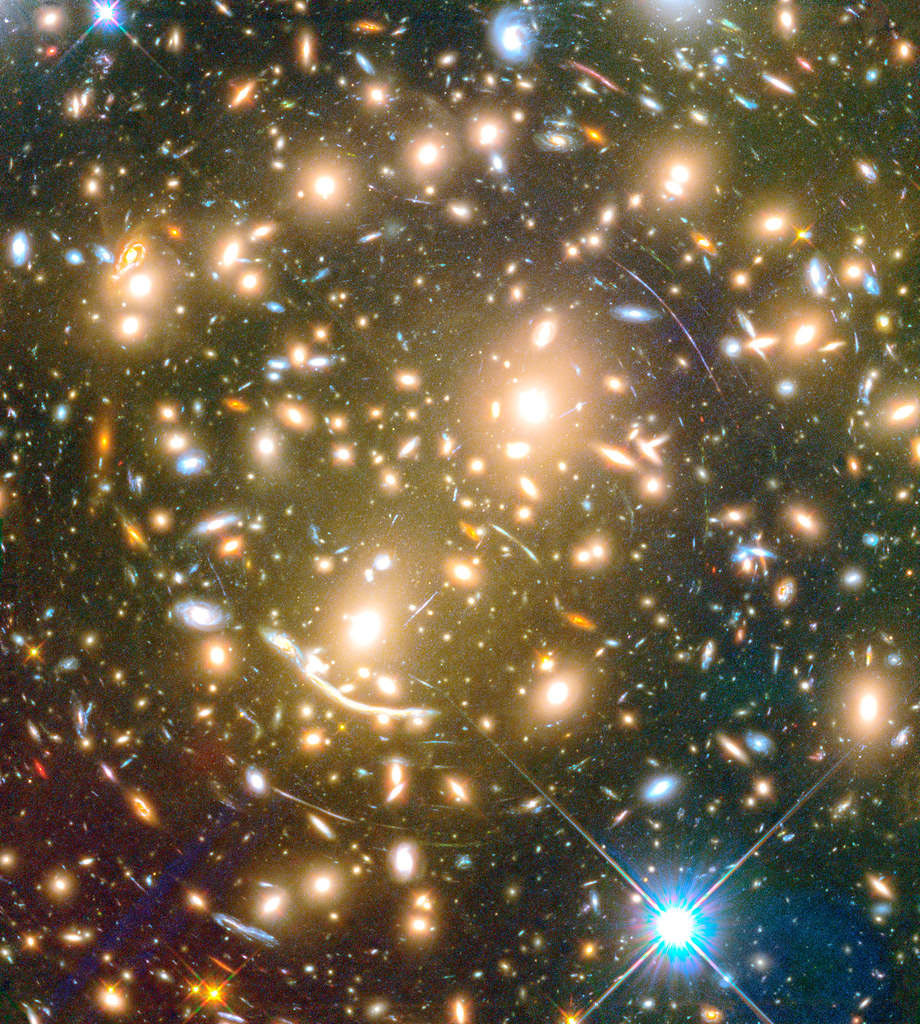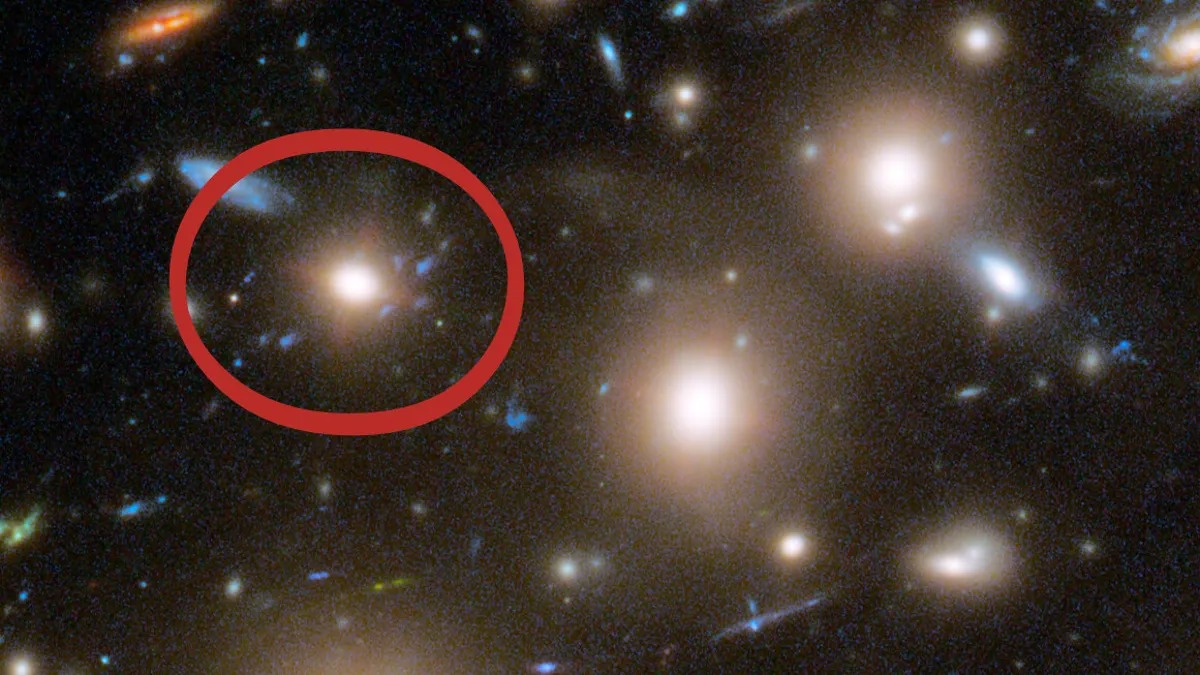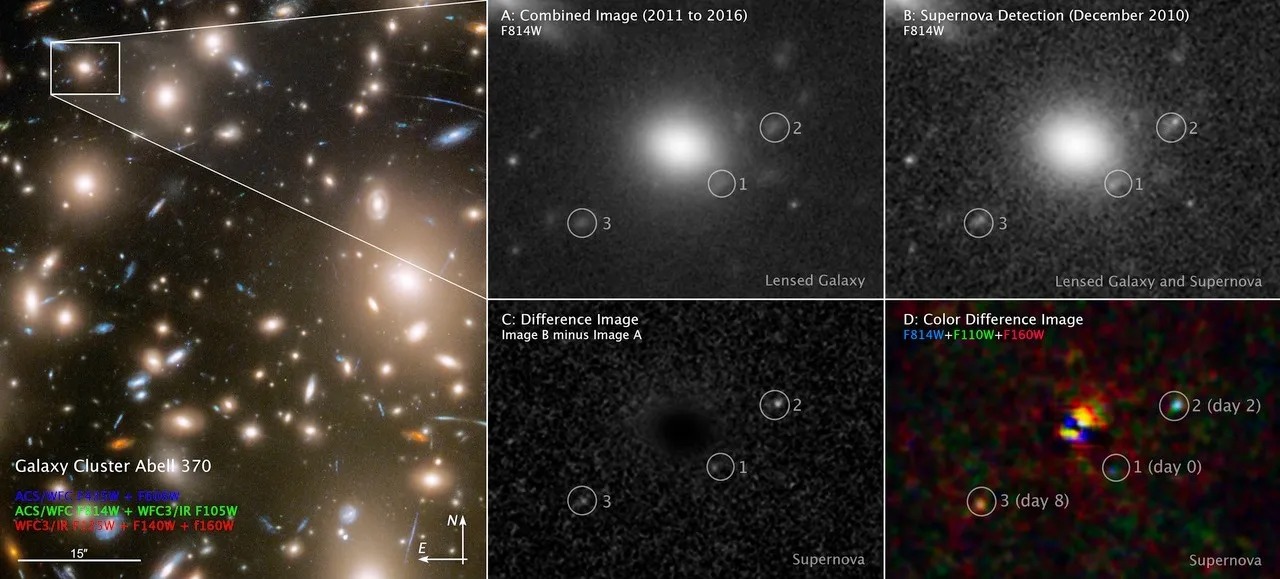Looking through archived images of the Hubble Space Telescope, a team of astronomers discovered an exciting event in these images that had not been noticed before. The images contained a supernova explosion taken just a few hours after the death of the star. The explosion occurred at a distance of 11.5 billion light years.

The images were obtained using Hubble in 2010 when photographing the galaxy cluster Abell 370. A team led by Dr. Wenlei Chen from the University of Minnesota was looking for transient events with gravitational lenses. The explosion was hidden behind Abell 370, but as light bends around the galaxy cluster due to gravity – an effect known as gravitational lensing – we can see the explosion of a distant supernova, albeit badly disfigured.

After analyzing the details of the images and creating simulation models based on the data obtained, scientists determined that before the supernova explosion, the star was a red supergiant with a diameter about 530 times the diameter of the Sun. But the most interesting thing is that the first image in a series of three was taken by the Hubble telescope only six hours after the explosion, which occurred after the core disintegration, and the second and third were taken about 10 and 30 days after the explosion, respectively.

Since the supernova has a high redshift index — the wavelengths of light are stretched and shifted to the red side of the spectrum due to the expansion of the Universe — astronomers were able to estimate the age of the supernova at about 11.5 billion years. This discovery makes it one of the oldest and most distant supernovae we have ever seen.
The team hopes that their simulations will help in the study of such distant supernovae, if they are detected. Those discovered, in turn, will be able to progress in the study of stellar populations with high redshift.
According to Nature
Follow us on Twitter to get the most interesting space news in time
https://twitter.com/ust_magazine
